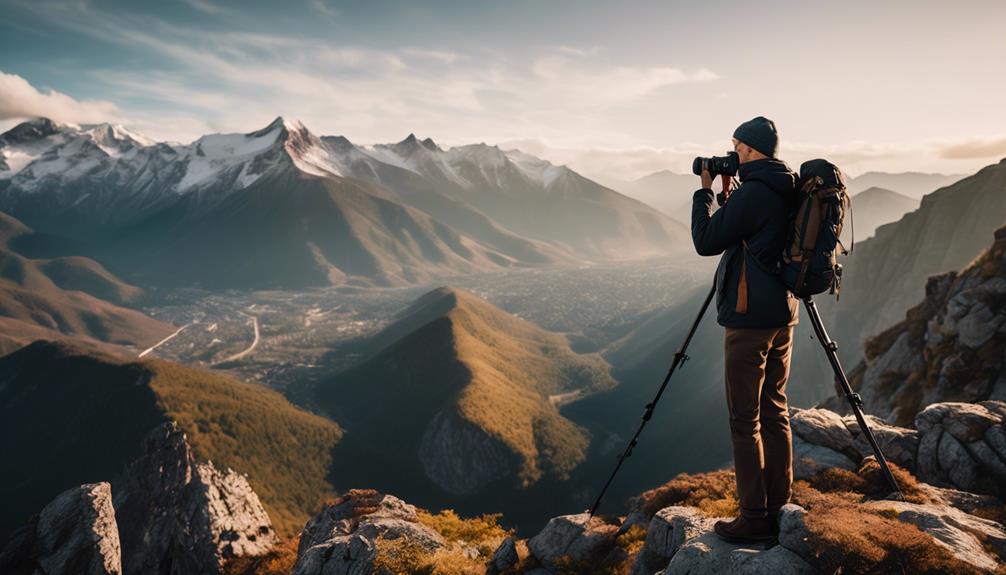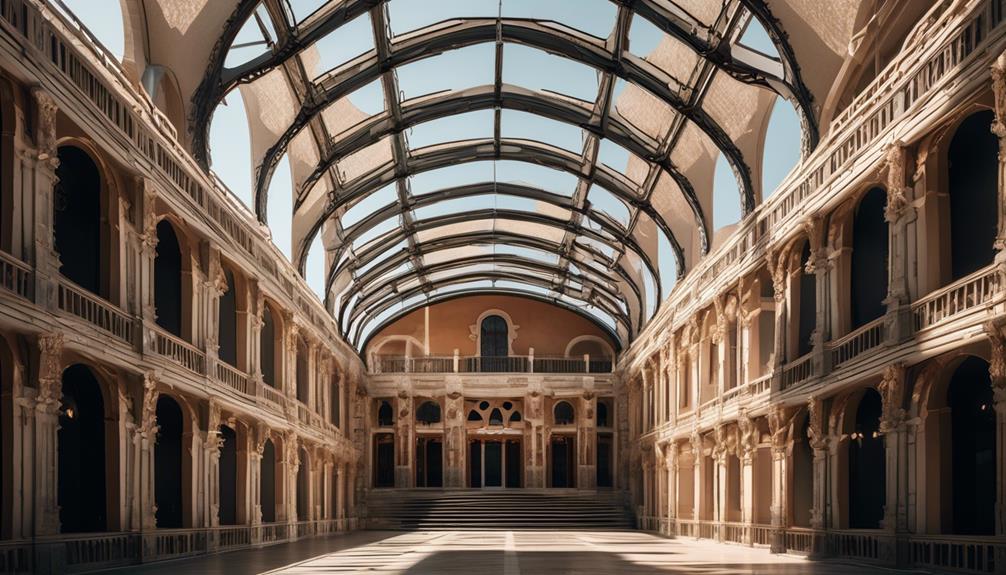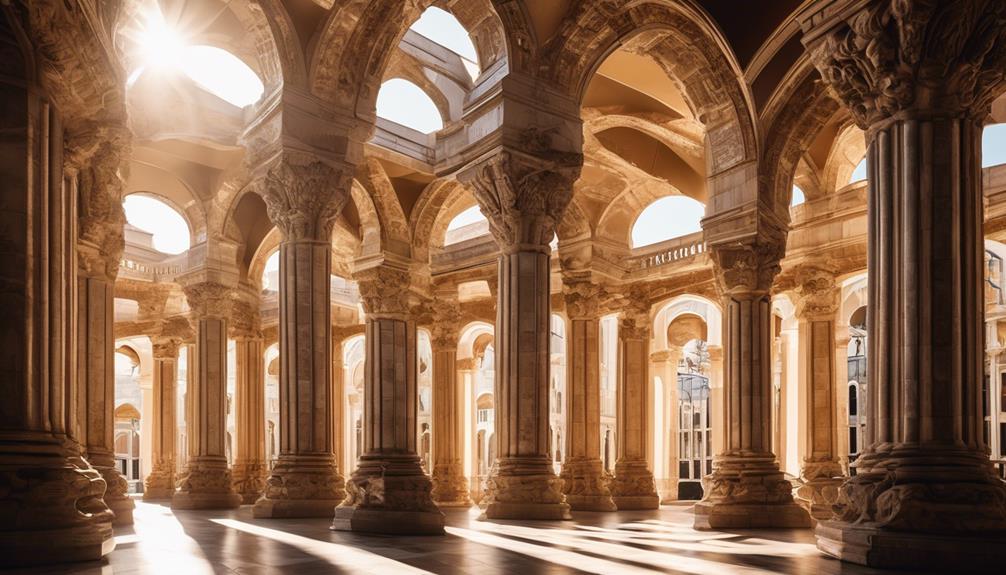Please note this post may contain affiliate links picked by me (Jay) that I have deemed may be of interest or relevant to you the reader of this.
These links do not affect the cost of the thing if you decide to purchase but i may get a little money if you choose to purchase.
For more information on my affiliate link policy click here.
As a photographer, capturing the essence of a building is like painting with light and shadow, crafting a masterpiece with each click of the shutter. It's a dance between composition and perspective, where every detail and texture tells a story.
Welcome to the ultimate guide on the essential principles of building photography, where I will unravel the secrets behind creating stunning architectural shots.
From mastering the art of composition to harnessing the power of light and shadow, I'll share techniques that will elevate your photography to new heights.
So, get ready to unlock the potential of your architectural images and embark on a journey of creativity and visual storytelling.
Key Takeaways
- Leading lines and symmetry are important composition techniques in building photography.
- Understanding light and shadow is crucial for capturing stunning architectural images.
- Perspective and angles play a significant role in showcasing the grandeur and beauty of buildings.
- Paying attention to details and textures, as well as using editing techniques, can enhance the overall aesthetic of architectural photographs.
Composition Techniques for Stunning Architectural Shots
When it comes to capturing stunning architectural shots, mastering composition techniques is key. One of the fundamental principles to consider is the use of leading lines. These are lines within the frame that guide the viewer's eye towards the main subject of the photograph. Whether it's the converging lines of a road or the vertical lines of a towering skyscraper, incorporating leading lines adds depth and visual interest to your images.
Another important aspect of composition in architectural photography is symmetry. Symmetry creates a sense of balance and harmony in the photograph, making it visually pleasing to the viewer. Look for symmetrical elements in the building, such as windows, doors, or columns, and position yourself accordingly to capture them in a balanced way. Utilizing symmetry can create powerful images that evoke a sense of order and stability.
In addition to symmetry, maintaining balance in your composition is crucial. Balance refers to distributing visual elements evenly throughout the frame. This can be achieved by positioning different elements on either side of the frame or using the rule of thirds to create a visually pleasing balance. By carefully considering the placement of architectural elements within the frame, you can create a sense of equilibrium and ensure that your photographs are visually appealing.
Understanding Light and Shadow in Building Photography
Now that we've explored the importance of composition techniques in architectural photography, let's shed light on the next crucial aspect: understanding the interplay of light and shadow in building photography. Mastering lighting techniques is essential for creating captivating images that showcase the depth and beauty of architectural structures.
Here are four key concepts to consider:
- Golden hour magic: The golden hour, that beautiful window of time just after sunrise or before sunset, offers soft, warm light that can transform buildings into enchanting subjects. Embrace the warm hues and long shadows during this time for stunning results.
- Experiment with artificial light: Don't limit yourself to natural light alone. Experiment with artificial lighting techniques to add depth and drama to your images. Explore the interplay between light and shadow created by strategically placed lights and experiment with different color temperatures for unique effects.
- Play with shadows: Shadows can be just as important as light when it comes to creating depth in building photography. Use the shadows cast by architectural elements to add visual interest and dimension to your images. Experiment with different angles and compositions to find the perfect balance between light and shadow.
- HDR for dynamic range: Buildings often have a wide dynamic range, with bright highlights and deep shadows. To capture all the details, consider using high dynamic range (HDR) techniques. This involves taking multiple exposures and blending them together in post-processing to create a final image that showcases the full range of light and shadow.
Understanding the interplay of light and shadow is crucial for building photography. By mastering lighting techniques and creating depth, you can capture stunning images that showcase the beauty and intricacy of architectural structures.
Mastering Perspective and Angles in Architectural Shots
To capture the true essence of architectural structures, it's essential to master the art of perspective and angles in your photography. Creative framing techniques play a crucial role in showcasing the unique features of a building. By experimenting with different perspectives, you can create visually stunning images that captivate your audience.
One effective technique is to shoot from a low angle, emphasizing the grandeur and height of a structure. This perspective can make even the simplest of buildings appear majestic. On the other hand, shooting from a high angle can provide a unique bird's-eye view, allowing you to capture the intricate details of the architecture.
Reflections can also add a touch of innovation to your architectural shots. Utilizing reflective surfaces such as glass windows or water can create captivating compositions. The reflections can enhance the overall aesthetic and create a sense of depth in your images.
Don't be afraid to experiment with different angles and perspectives. Move around, explore the surroundings, and find the angles that highlight the architectural beauty. Remember, the key is to think creatively and push the boundaries of traditional architectural photography. With the right techniques, you can capture buildings in a way that showcases their true innovation and uniqueness.
Capturing Details and Textures in Building Photography
I love how building photography allows me to capture the intricate details and textures that bring architectural structures to life. It's like uncovering hidden gems that may go unnoticed by the naked eye.
Here are four techniques that I use to enhance depth and showcase materials in my building photography:
- Play with perspective: By experimenting with different angles and viewpoints, I can create a sense of depth and dimension in my photographs. Whether it's shooting from a low angle to exaggerate the height of a building or using leading lines to draw the viewer's eye into the frame, perspective can add a dynamic element to the composition.
- Focus on textures: Architectural structures are often made of various materials, each with its own unique texture. Whether it's the roughness of exposed brickwork or the smoothness of glass, capturing these textures can add visual interest and tactile appeal to the photograph.
- Utilize natural light: Lighting plays a crucial role in highlighting the details and textures of a building. I prefer shooting during the golden hour when the warm, soft light brings out the depth and richness of the materials. Additionally, using side lighting can create interesting shadows that further emphasize the textures.
- Incorporate close-ups: Sometimes, it's the small details that make a building truly remarkable. By zooming in and capturing close-up shots of intricate architectural elements, such as ornate carvings or decorative patterns, I can showcase the craftsmanship and attention to detail that went into creating the structure.
Capturing details and textures in building photography allows me to fully appreciate and celebrate the artistry of architecture. It's a constant exploration of the built environment, where innovation meets creativity.
Editing Tips for Enhancing Architectural Images
Exploring the artistry of architecture doesn't stop at capturing the details and textures in building photography; it extends to the editing process, where we can further enhance and bring out the beauty of architectural images. When it comes to editing architectural photographs, color grading techniques play a crucial role in creating visually stunning and impactful images.
Color grading involves adjusting the colors, tones, and overall mood of an image to evoke a specific emotion or enhance its visual appeal. With the right color grading techniques, you can transform a dull and flat photograph into a vibrant and captivating masterpiece. Experimenting with different color palettes and tones can give your architectural images a unique and artistic touch.
To achieve professional-grade edits, it's essential to use post-processing software options that offer advanced editing capabilities. Some popular software options include Adobe Lightroom, Capture One, and DxO PhotoLab. These tools provide a wide range of adjustment tools, such as exposure, contrast, saturation, and color balance, allowing you to fine-tune every aspect of your architectural images.
In addition to color grading and post-processing software, it's crucial to maintain the integrity of the architectural elements in your edits. Avoid excessive manipulation and strive for a natural and authentic representation of the building. Remember, the goal is to enhance the image, not to completely alter its original form.
Frequently Asked Questions
What Equipment Is Best for Building Photography?
When it comes to building photography, the best camera and lens combination can make all the difference.
For capturing the grandeur and intricacies of architectural structures, a high-resolution camera with advanced features is essential.
Pairing it with a wide lens allows you to capture the entire building in one frame, showcasing its scale and design.
This combination not only ensures sharp and detailed images but also allows for creative perspectives that truly showcase the innovation and beauty of architectural marvels.
How Do I Photograph Buildings at Night?
When it comes to photographing buildings at night, there are some key techniques to keep in mind.
One of the most effective ways is to use long exposure shots, which allow you to capture the beautiful lights and details of the buildings.
By using a tripod and adjusting your camera settings, you can create stunning images that showcase the architectural beauty in the dark.
It's an exciting challenge that adds a touch of innovation to your photography skills.
What Are Some Tips for Capturing Reflections in Architectural Shots?
When it comes to capturing reflections in architectural shots, there are a few tips I've learned along the way.
First, shooting in low light can create stunning results, so embrace the darkness and experiment with long exposures.
Secondly, get creative with your use of reflections. Look for interesting surfaces like glass or water that can add depth and dimension to your photos.
Don't be afraid to try different angles and perspectives to capture unique and innovative shots.
Happy shooting!
How Can I Avoid Distortion in My Architectural Photographs?
To avoid distortion in my architectural photographs, I employ various techniques for capturing sharp images.
By using a wide-angle lens with minimal distortion, I ensure that the lines and perspectives in my photos remain true to the building's design.
Additionally, I pay attention to my camera's positioning and angle to minimize any unwanted distortions.
It's all about finding the right balance between composition and technical precision to create stunning and accurate architectural photographs.
Are There Any Legal Considerations I Should Be Aware of When Photographing Buildings?
Are there any legal considerations I should be aware of when photographing buildings?
Absolutely! Two important factors to keep in mind are privacy concerns and intellectual property rights.
When photographing buildings, it's crucial to respect the privacy of individuals who may be present in or around the structure.
Additionally, be mindful of any copyrighted or trademarked elements that may be visible in your photographs.
Conclusion
After mastering the essential principles of building photography, I'm ready to capture architectural shots that are truly stunning.
Through understanding composition techniques, light and shadow, perspective and angles, and capturing details and textures, my images will come to life.
With the help of editing tips, I can enhance my architectural images and create a visual representation that's both captivating and breathtaking.
I'm excited to embark on this journey and see the world of architecture through my lens.


